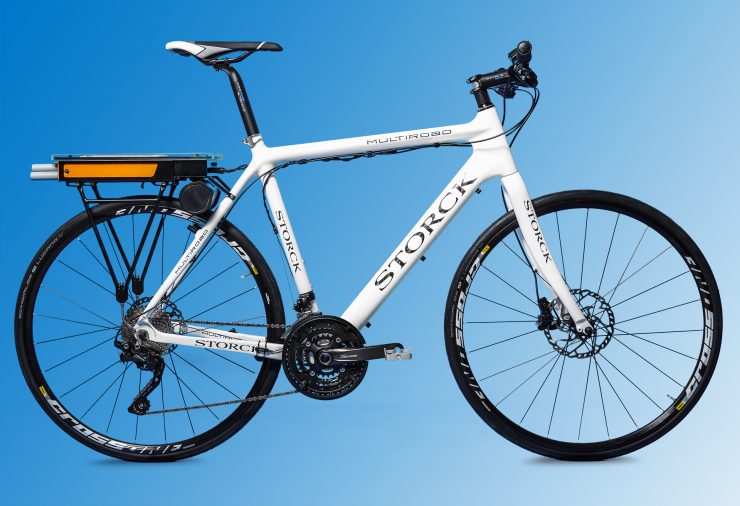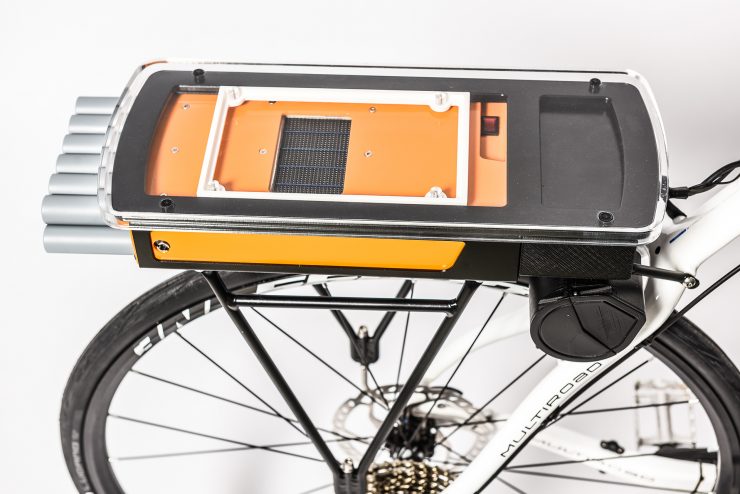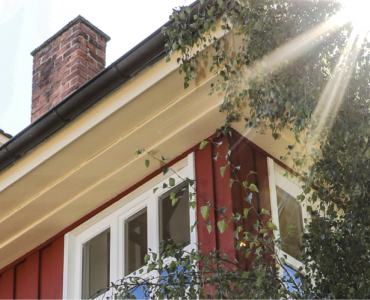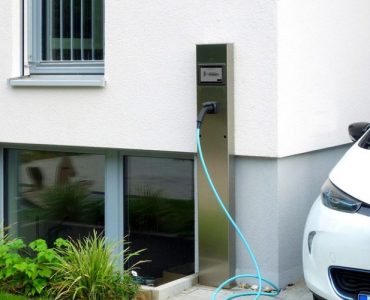The LiteFCBike uses a fuel cell for the drive and thus differs from conventional e-bikes. Every bike can be retrofitted.
This year at the Hannover Trade Fair 2019, a system prototype for upgrading a conventional bike into an electric bike was presented for the first time. The special feature of this system is that a fuel cell that supplies the necessary energy for the electric motor. We spoke with the developers of the fuel cell system and the drive train and also with an expert of electric bikes who each explained the system and the ideas behind it from their perspective, looking at the pros and cons of the new system and suggestions for suitable applications.
Innovation4E:
Electric bikes are becoming ever more popular. Already now, every fourth bike sold in Germany is equipped with an electric motor. The “LiteFCBike” is not a conventional electric bike. What makes it special?
Timo Kurz:
The special feature of this bike is the power supply. In conventional pedelecs, electricity is stored in an on-board battery which is discharged during the ride. In the “LiteFCBike”, a fuel cell, installed in the battery housing, recharges the small battery during the ride. Therefore, instead of electricity, hydrogen is stored in the bike’s tank and converted to electricity as needed. The only byproduct of the chemical conversion from hydrogen to electricity is water vapor.
Innovation4E:
In most conventional electric bikes, the motor including the electronics are housed near the bottom bracket or in the rear or front hub. The system “Conodrive” in the “LiteFCBike” is, however, mounted on top of the rear rack. Can you explain this concept?
José Fernandez:
The “Conodrive” system was conceived for performance driving. On level or slightly inclined terrain a sporty biker using pure muscle power moves much faster than 25 km/h, the allowable speed for pedelecs. For steeper inclinations, on the other hand, even a well-trained biker doesn’t reach this tempo limit. Here “Conodrive” switches in, assisting only on steep uphill gradients. The motor is optimized for speeds between 15 and 21 km/h where it reaches efficiencies up to 90 %. On level terrain the “Conodrive” motor is completely separated mechanically from the conventional drive system of the bike. Therefore, no electrical losses are incurred when the bike is running purely on muscle power. Another feature is the system’s low weight. The motor system weighs 1.3 kg and the fuel cell system 3.3 kg so that the total weight of the prototype system is c. 4.6 kg. To compare, the total system weight for conventional ebikes (motor, battery, electronics) varies between seven and ten kilograms. This difference in weight is especially noticeable to the biker when the motor is off.
Innovation4E:
How does this principle work in the practice? Assuming that I am just beginning to ride up a hill, how do I switch on the electric motor?
José Fernandez:
It is quite simple. As with most electric bikes, there is a handlebar-mounted computer indicating the most important motor parameters like voltage, power, battery capacity, etc. Via this computer, the motor can be turned on and off and the desired amount of assistance can be set. In the present model, the motor is coupled or decoupled to the rear tire via a cable-activated roller which is activated by a manual switch on the handlebars. An advanced version already exists in which the motor automatically turns on and off as needed. This new feature improves the simplicity and even reduces the system’s weight.
Innovation4E:
What about the bike tires? Do they experience more wear and is every tire type suitable?
José Fernandez:
Yes, the tire abrasion is twice as high on the rear tire due to increased friction from the asphalt (as for all bikes) and also from the roller of the electric drive, yet only when operating. Since the ebike is conceived to assist only when going uphill, the increased tire abrasion occurs only about 10 to 20% of the time. Both profile tires and slicks are suitable with the system. The friction roller, however, only fits to certain tire widths (700x23c and 700x25c). These types of tires provide the best performance and energy losses are much lower. Based on experience, tires last about 6000 to 8000 km with the ConDrive system use described as above.
Innovation4E:
Mr. Theis, on velostrom.de you report on the newest developments in the ebike market and you test bikes and components. You also have a good overview about existing technologies and concepts. Both the drive and the provision of energy in the “LiteFCBike” differ from conventional ebikes. Can you tell us about the advantages and disadvantages here?
Alexander Theis:
The main advantages of the system are its high efficiency and the low weight. While a typical pedelec weighs ca. 25 kg, The “LiteFCBike” weighs about 10 kg less than a typical pedelec due to the low weight of its drive train. In contrast, the drive was not designed to assist with starting. The development concept is based on electric assistance only on inclines, making this bike ideal for sporty bikers who only need occasional uphill assistance.The “LiteFCBike”’s energy supply system based on a fuel cell is particularly innovative and holds great promise for the future. It has the potential to solve the drive range problem of cargo bikes used in commercial applications.
Since the focus on low weight, there is a relatively low amount of fuel storage on the “LiteFCBike”. On the other hand, the weight of a cargo bike, particularly if used commercially, is of minor importance. By increasing hydrogen storage capacity with a pressurized tank, for example, and adapting the system for a typical cargo bike drive, bike couriers would be able to increase their action radius and drive throughout the day without refueling.
Innovation4E:
Most electric bikes have a removable lithium-ion battery, which can be recharged from a normal electric socket. How does refueling function in a fuel cell system?
Timo Kurz:
Basically one distinguishes between two types of storage tanks: For the “LiteFCBike”, a metal hydride storage system is used due to size. For small amounts of hydrogen (10g for the “LiteFCBike”), metal hydride storage is clearly more compact than a pressurized canister and can be easily filled at moderate pressure levels (less than 30 bar). This enables anyone to fill the tank at home using small electrolyzers which are meanwhile readily available on the market. Disadvantageous are the longer filling times, which are more in the line with modern batteries.For larger amounts of hydrogen (100 g or more, as required for cargo bikes or larger vehicles), pressurized storage is the better choice. Depending on the type, the canisters can be filled at 300 bar or more. The tanks themselves weigh less than metal hydride tanks and can be filled more rapidly, i.e. about the filling times at a conventional gas station. The only disadvantage is that an appropriate refueling infrastructure is necessary, i.e. the bike must be taken to a filling station for refueling.
Innovation4E:
Would it be possible to put the fuel cell system in a housing compatible to typical ebike systems and use it instead of the batteries?
Timo Kurz:
Yes, certainly! The geometry of the fuel cell system prototype is similar to typical bike batteries. With a few adaptions, including the choice of hydrogen storage (integrated metal hydride or external pressurized canister), the system can be implemented for other pedal assisted electric drives.
Innovation4E:
Today, cargo bikes are becoming a common sight. They are being increasingly used for a wide range of transport purposes. As a rule, the larger and heavier the vehicle, the larger and heavier the battery or storage tank can or should be. How does the fuel cell system compare here?
Timo Kurz:
The larger the available space and the higher the energy required, the better the fuel cell can put its advantages to use. Unlike batteries, the energy storage and the energy converter are separate in a fuel cell system. When more energy is required, such as for a longer driving range, then just the storage and not the converter can be extended.A fuel cell system offers an ideal solution for cargo bikes. Cargo bikes provide sufficient room for large hydrogen storage tanks and they can be refilled in less time than batteries.
Innovation4E:
Then it is more likely that a further developed fuel cell system will be used in the Cargobike sector in the future, or will we see the “LiteFCBike” in its presented form soon at the bicycle dealer?
Timo Kurz:
The “LiteFCBike” was a successful prototype developed to demonstrate just how small a fuel cell system can be designed. It is a functional demonstrator that we developed as an alternative to conventional batteries. Based on the current state-of-the-art, there is no plan, as yet, to further develop this prototype into a serial product.
We are currently involved in discussions with different partners, such as manufacturers of cargo bikes and drive systems, about the further development of this product. Additionally we are also open to other partners who want to enter into product development. The future of the “LiteFCBike” is still open.








Add comment